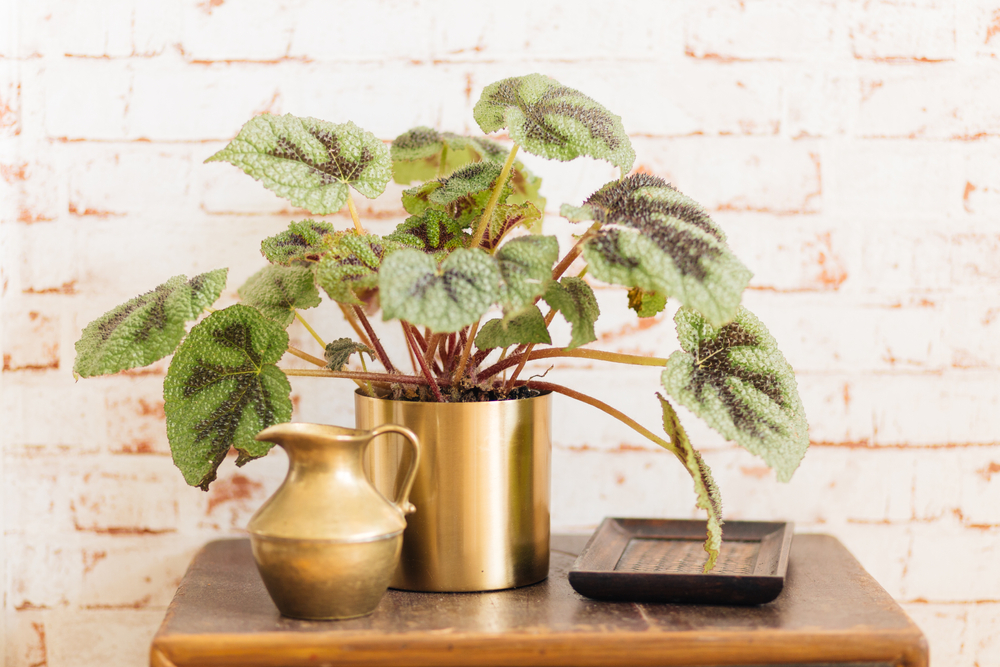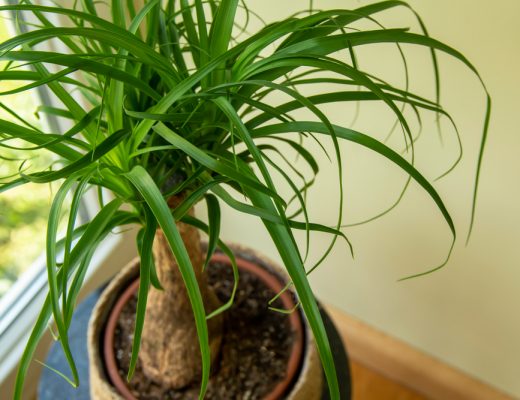Rex begonias are beloved for their vivid foliage and distinctive patterns, making them a standout addition to any home or garden. With a reputation for being slightly temperamental, these plants thrive when given the right balance of light, water, and care. This guide will walk you through everything you need to know about rex begonia care, including how to grow these plants in containers, maintain them in a garden, and enjoy their beauty indoors.
Origins of Rex Begonia Plant Care
The rex begonia, known scientifically as Begonia rex-cultorum, traces its origins to the forests of Assam, a region in northeastern India. Discovered in the early 19th century, this plant quickly gained attention for its extraordinary foliage. Unlike many other begonias cultivated for their flowers, the rex begonia’s appeal lies in its vibrant, patterned leaves.
The plant was introduced to Europe and other parts of the world during the colonial period, where it became a favorite among horticulturists and collectors. Over time, hybridization efforts led to the creation of numerous varieties, each showcasing unique combinations of colors, textures, and leaf shapes. Today, rex begonias are prized for their ornamental value and are commonly found in homes and botanical gardens worldwide.
Cut Flower Care
While rex begonias are primarily grown for their ornamental leaves, their delicate flowers can also be enjoyed as cut flowers. Here are some tips to ensure your rex begonia flowers stay fresh:
- Unpacking and Processing: Upon cutting the flowers, place them in a clean vase filled with room-temperature water. Trim the stems at a 45-degree angle to maximize water uptake.
- Optimal Conditions: Keep the vase in a cool, shaded spot, away from direct sunlight and drafts. High humidity can help prolong the life of the flowers.
- Refreshing the Arrangement: Change the water every two to three days, and re-trim the stems slightly to prevent blockages from forming.
For more tips on extending the life of your cut flowers, consider these guides on reviving a wilting bouquet or how to unpack and process flowers.
Caring for Flowers in Gardens
Rex begonias thrive in shaded areas with high humidity, making them a popular choice for shaded flower beds and container gardens. Here’s a detailed breakdown of their care:
When to Plant
Plant rex begonias after the last frost in spring. They prefer consistently warm temperatures, ideally between 60°F and 75°F.
Where to Plant
Rex begonias require indirect or dappled sunlight. Too much direct sun can scorch their leaves, while too little light can cause the colors to fade. Choose a location with filtered light, such as under a tree or along a shaded patio.
When to Water
Water your rex begonia when the top inch of soil feels dry. Avoid overwatering, as these plants are prone to root rot. Use well-draining soil and water early in the day to allow excess moisture to evaporate.
Common Pests and Diseases
- Pests: Rex begonias are susceptible to mealybugs, spider mites, and aphids. Treat infestations with insecticidal soap or neem oil.
- Diseases: Powdery mildew and root rot are common issues. Ensure proper air circulation and avoid waterlogging the soil.
Complementary Plants
Rex begonias pair beautifully with ferns, hostas, and impatiens in shaded gardens. Their bold foliage adds contrast to more subdued greenery.
1. Caladiums
- Caladiums have vibrant, heart-shaped leaves that echo the bold colors of rex begonias. Their similar light and humidity requirements make them ideal companions.
- Care needs: Prefers indirect light, warm temperatures, and moist, well-draining soil.
2. Ferns
- The delicate, lacy fronds of ferns contrast beautifully with the bold, patterned leaves of rex begonias.
- Care needs: Thrive in similar humid, low-light environments with consistently moist soil.
3. Polka Dot Plant
- The speckled leaves of the polka dot plant add a playful element to the arrangement, complementing the intricate patterns of rex begonias.
- Care needs: Likes bright, indirect light and evenly moist soil.
4. Peace Lily
- The broad, green leaves and white flowers of peace lilies offer a calming, neutral backdrop to the vibrant rex begonia foliage.
- Care needs: Thrives in low to medium light and requires regular watering to maintain slight soil moisture.
5. Spider Plant
- The arching, variegated leaves of spider plants create a dynamic contrast in texture and add height to the arrangement.
- Care needs: Easy-going, thrives in indirect light, and tolerates a range of watering conditions.
6. Fittonia (Nerve Plant)
- The intricate veining of fittonia leaves harmonizes with the intricate patterns of rex begonias, creating a cohesive, colorful display.
- Care needs: Prefers bright, indirect light, high humidity, and moist, well-draining soil.
7. Purple Shamrock
- The deep purple leaves of oxalis create a striking contrast with the bright and metallic tones of rex begonias.
- Care needs: Thrives in indirect light with well-draining soil and moderate watering.
8. Pilea (Aluminum Plant)
- Pileas, with their small, textured leaves and silvery accents, create a balanced visual pairing with rex begonias.
- Care needs: Bright, indirect light and moist, well-draining soil.
9. African Violets
- African violets provide small pops of color and share the same love for high humidity and bright, indirect light as rex begonias.
- Care needs: Keep soil consistently moist but avoid waterlogging.
Growing Flowers in Containers
Rex begonias are perfect for container gardening, allowing you to showcase their vibrant leaves indoors or on patios. Follow these tips to keep them thriving:
Choosing the Right Container
Opt for pots with drainage holes to prevent waterlogging. Clay pots, planter boxes, or decorative window planters work well and complement the plant’s vibrant appearance.
Soil Requirements
Use a lightweight, well-draining potting mix. Adding perlite or peat moss can improve aeration and prevent compaction.
Watering Tips
Container-grown rex begonias dry out faster than those in the ground. Check soil moisture frequently and water when the top inch feels dry.
Light Conditions
Place the container in bright, indirect light. Rotate the pot occasionally to ensure even growth.
Varieties of Rex Begonia
Rex begonias come in a dazzling array of varieties, each with its own unique coloration and leaf shape. Here are a few notable ones:
Escargot
Named for its unique spiral-shaped leaf pattern resembling a snail’s shell, the Escargot rex begonia has silver and green leaves with a dramatic swirl at the center. It’s one of the most popular and recognizable varieties.
Iron Cross
This striking variety features bright green leaves with a bold, dark cross-shaped pattern in the center, resembling wrought iron. The textured, hairy leaves add an extra layer of interest.
Red Kiss
True to its name, Red Kiss features deep burgundy leaves with a black center and edges, creating a striking, velvety appearance. It’s perfect for adding bold color to any indoor garden.
Merry Christmas
With a festive mix of red, green, and silver tones, this variety earns its name. The jagged edges of the leaves and vivid colors make it a cheerful addition to any collection.
Fireworks
This variety lives up to its name with explosive patterns of silver and green streaks radiating from the leaf center, bordered with purple and pink tones. It’s a showstopper for any plant enthusiast.
Cowardly Lion
Known for its ruffled, almost lion-like mane of leaves, this variety features shades of green, gold, and bronze, with red veins and edges, creating a bold, textured appearance.
Silver Queen
This elegant variety boasts large, silvery leaves with subtle green veins and darker edges, giving it a sophisticated, shimmering look. It’s a great choice for brightening shady corners.
Pink Charming
A softer option, Pink Charming features light pink leaves with a silvery sheen and darker pink veins. Its pastel tones make it an excellent companion for other vibrant houseplants.
Fun Facts About Rex Begonias
- Native to India and Southeast Asia, rex begonias are part of the Begoniaceae family, boasting over 1,800 species.
- While they do produce small flowers, rex begonias are prized for their striking leaves rather than their blooms.
- Many rex begonias available today are hybrids, created by crossing the original species with other begonias to enhance their patterns and durability.
- These plants thrive in high humidity, making them excellent candidates for terrariums or areas with consistent moisture in the air.
- Rex begonias are sensitive to cold and thrive in temperatures between 60–75°F. They should be kept indoors in cooler climates.
- Rex begonias grow from a rhizome, a thick, horizontal root structure that helps store nutrients and allows the plant to thrive in low-light conditions.
- The leaves of rex begonias often have a velvety texture, adding a tactile element to their visual appeal.
- Rex begonias are often associated with creativity and inspiration, making them a thoughtful gift for artists or anyone embarking on a creative project.
Incorporate rex begonias into your home or garden to enjoy their vibrant colors and unique foliage. Whether planted outdoors, grown in containers, or displayed as cut flowers, these plants can bring life to any space. For more plant care tips, explore our peperomia plant care guide or learn about caring for Chinese evergreen. Ready to send some greenery as a gift? Check out our selection of plants for delivery.
Shop All



